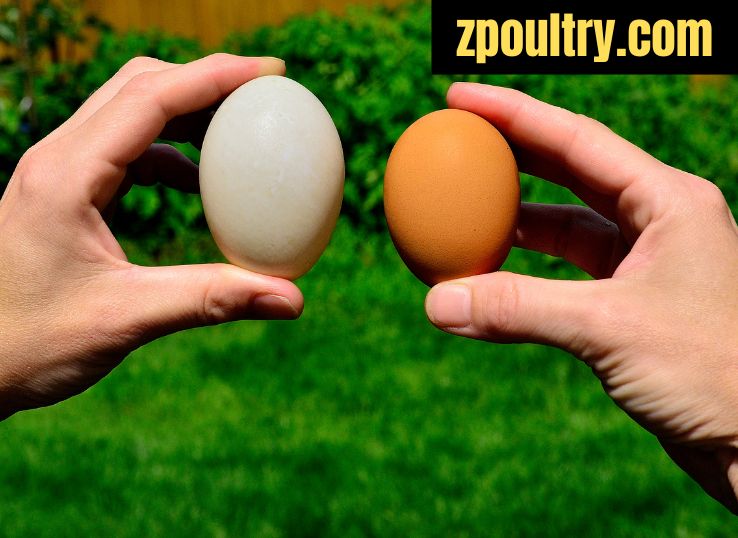Last Updated on March 20, 2023
Incubating eggs at your own home is something extraordinary. But to do so, you need to know if the eggs are fertile or not. Luckily, Candling is a technique you can use to know the answer to this confusing question.
The fertility of an egg needs to be checked before you place it in the incubator. There are chances that the eggs you get are devoid of any further development. Of course, you don’t want to crack open every egg to know about its fertility. Do you?
In this article, I am going to address a common method widely used to know an egg’s fertility. This technique is fairly easy to perform and you can implement them at home. So, let’s go into the detail of our today’s topic.

Table of Contents
ToggleImportance of Egg Fertilization
For the production of fertile eggs, both male and female birds need to be sexually sound. After mating and cloacal kissing, the rooster deposits the sperms in the hen’s reproductive. The process of mating and reproduction is the same in all kinds of birds.
The female bird’s reproductive tract produces numerous eggs in the ovaries. After each cycle, one egg is released that starts its development as an egg. Females also lay eggs without mating leading to the production of infertile eggs.
Commercial and corporate poultry industries rely on fertile eggs for flock growth. At the same time, these industries also produce infertile eggs due to high egg consumption demands. So, you must get fertile eggs if you want to incubate them for chicks.
Technique to Identify Fertile Eggs
If you’re in the process of incubation, first make sure you get the right type of incubator. The humidity and temperature setting must be set in the required range. Below is the common technique you can use to tell if an egg is fertile or infertile.
Egg Candling
The process of candling is the most common method to tell the egg’s fertility state. This process involves passing the light rays through the egg with a light source. You can use any light source but I recommend getting a straight-beam flashlight.
To get started, make sure you perform this technique in a dark room. All you need to do is to see inside the egg when you place the flashlight close to the egg. You can do it in a well-lit room but a darker room provides more accurate results.
Candling has many benefits including egg crack identification and fertility check. The cracks and other damage to the eggshell directly lead to its infertility. This is because the egg’s internal environment is compromised and it cannot sustain the chick’s growth.
This technique is not only used before the incubation but also during the incubation. Experts recommend candling more than once when eggs are incubating. For instance, you can also use candling on the 7th and 14th day after the initial egg candling.
At day 0, the first candling is done to ensure the egg is free from any cracks and other abnormalities. The day 7th and 14th candling help you to monitor the chick development inside the egg.
Examining the egg during incubation is vital to ensure fertile chick growth. There is an additional benefit of cost and energy saving as abnormalities can happen inside the incubator. Make sure not the disturb or shake the eggs during the candling process.
What to Look for During Egg Candling?
After the first candling to monitor egg cracks, the eggs are placed in the incubator. Now at the right temperature and humidity, the embryo starts to develop. After the first 7 days, embryo growth can be seen through candling.
When you perform candling on the 7th day, a fertile egg shows many dark lines inside. These lines are blood vessels formed after the embryo establishes its growth. Between these small lines, there will be a darker spot showing the presence of the embryo itself.
If you see lines and darker structures on the 7th day through candling, the egg is fertile. On the other hand, seeing any other things or nothing at all shows the egg is incompatible with chick growth. In that case, you can discard the egg and put it in a new one if you prefer.
You can do one more candling on the 14th day to re-evaluate the embryo condition. At this time, there are chances of many chick body parts visible inside. You may identify the toes, eyes, and beak through candling on the 14th day.
However, if you are unable to see anything or the egg looks the same as that on day 0 or 7, the egg is infertile. Infertile eggs pose a risk to the surrounding fertile eggs inside the incubator. Therefore, proper identification and removal are always necessary.
Patience is Key to Successful Egg Incubation
No doubt you always try to get fertile eggs from a trusted source, but there are chances of failure. These can happen at any time from transporting the eggs to incubation. Fertile eggs must be handled with care and prevent accidental breaks and cracks.
At the same time, we cannot ignore the soundness of the equipment used in incubation. I advise you to invest in a good quality fully-automated incubator. Such incubators can save you the trouble of manually setting the controls and accidental errors.
With that being said, candling is by far the most effective and easy method to know about the egg’s condition. As you need to hatch the eggs, you cannot crack open them to check their fertility.
With proper care, monitoring and incubation, you’ll have your first batch of chicks. Candling can be performed on any type of egg. This method uses visible light rays to see through the egg. Candling is safe and doesn’t cause any harm to the chick inside.
Research References
Ernst, R., et al. Egg candling and breakout analysis. UCANR Publications, 2004.
De Ketelaere, Bart, et al. “Non-destructive measurements of the egg quality.” World’s Poultry Science Journal 60.3 (2004): 289-302.
Tolentino, Lean Karlo S., et al. “Development of fertile egg detection and incubation system using image processing and automatic candling.” TENCON 2018-2018 IEEE Region 10 Conference. IEEE, 2018.

I am a Veterinarian by profession having 3 years of experience in raising poultry flocks. So far my number of successful flocks is 9. I am sharing all my experience about poultry farming with you so that you can make this profession your bread and butter. Stay Tuned with my latest post.
